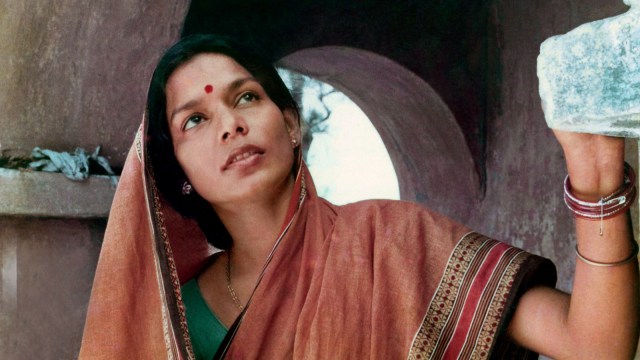Click here to follow Screen Digital on YouTube and stay updated with the latest from the world of cinema.
Spotlight on a timeless Odia classic, Maya Miriga, at Italian festival
Abandoned at a warehouse, the print of Maya Miriga was restored by the Film Heritage Foundation and will be screened at Il Cinema Ritrovato Festival in Bologna, Italy, on June 27 .
 Miriga, restored by the Film Heritage Foundation, will be screened at Il Cinema Ritrovato Festival. (Photo: Film Heritage Foundation)
Miriga, restored by the Film Heritage Foundation, will be screened at Il Cinema Ritrovato Festival. (Photo: Film Heritage Foundation)Over the years, Nirad Mohapatra-directed Maya Miriga (The Mirage) has remained one of the rare Odia-language movies that has enjoyed the appreciation of cinema enthusiasts as a timeless classic. What’s special about this 1984-made movie is that the glory it had brought to the Odia cinema — it was selected for the Critics’ Week at the Cannes Film Festival as well as secured second place in that year’s Indian Panorama awards for Best National Film and won a bunch of other international awards — has remained unmatched.
While repeating that feat has proven to be a proverbial ‘mirage’ for Odia filmmakers, the fact that this is the only film Mahapatra directed has created a fable-like feel around it. These factors make the three-year-long process of finding the film’s reels in a poor condition and abandoned in a warehouse; its challenging and painstaking restoration funded by the Film Heritage Foundation (FHF); and the upcoming premiere of its restored version during the Il Cinema Ritrovato Festival in Bologna, Italy, a significant moment for Indian cinema.
View this post on Instagram
Compared to Shyam Benegal-directed Manthan (1976), whose restored print was showcased under Cannes Film Festival‘s classic section last month, Maya Miriga does not have any big stars attached to it. However, for Shivendra Singh Dungarpur, director of FHF, the restoration of Maya Miriga, an important title of the Eighties’ New Wave cinema, was “an obvious choice”. He says: “This was crucial for us – not just for the film’s beauty and the fact that it was in danger of vanishing, but also because it was a very important film from Odisha whose restoration would serve to bring Odia film heritage back into the limelight.”
The 110-minute-long film, whose story is written by Mohapatra and Bibhuti Patnaik, follows the gradual disintegration of a middle-class joint family. The family of Raj Kishore Babu, an elderly headmaster of a school, comprises his mother, wife and his five children. Another key member of the family, and one of the film’s leading characters, is Prabha, wife of the dutiful eldest son Tuku, a lecturer. The family has pinned its hopes of a better life on Tutu, the second son who eventually becomes a civil servant. After Tutu’s marriage with a girl from an affluent family, however, the family dynamics undergo a change.
View this post on Instagram
The film described as “a requiem to the joint family” was shot in Puri. Sharing details regarding its making, Mahapatra had said: “With a small crew and a team of non-professional artistes, we pitched our tents months in advance to dress up an abandoned house including its courtyard, which was to be our only set. We were lucky to have this house at our disposal and to have the best of both worlds – a set on location.”
The writer-director, who was born on November 12, 1947 in Odisha’s Bhadrak, graduated from the Film and Television Institute of India (FTII), Pune, with a diploma in film direction in 1971 and joined the institute as a lecturer in 1972. He passed away on February 19, 2015.
Dungarpur recalls that he was aware of Maya Miriga from the time he was a student of FTII. “PK Nair had often spoken about the film in glowing terms and Surender Chawdhary, who taught me at FTII, too had always believed that it was the best of the New Wave films.” On November 17, 2020, Dungerpur received a mail from Sandeep Mohapatra, son of the late filmmaker, asking him to restore his father’s film.
After much searching, they found 12 reels of the 16mm original camera negative abandoned in a warehouse of Prasad Lab in Chennai. They had been removed from the lab storage for non-payment of dues. Later, FHF accessed a 35 mm print of the film which was with NFDC-NFAI. “We decided to scan the 35 mm print at the Prasad Lab in Chennai so that we could use the best scanned portions from both sources for the restoration. The sound was also taken from the 35 mm print,” shares Dungarpur. This was not an easy process. Due to deterioration the 35 mm print colours were distorted and the faces were blurred.
A specially-edited video, shared by FHF on its social media, shows the restoration that Maya Miriga’s old print has undergone. With the layer of pink that had covered its visuals removed, it provides glimpses of life in that old house in Puri where dreams and disappointments would shape the familial ties.


Photos
- 01
- 02
- 03
- 04
- 05































